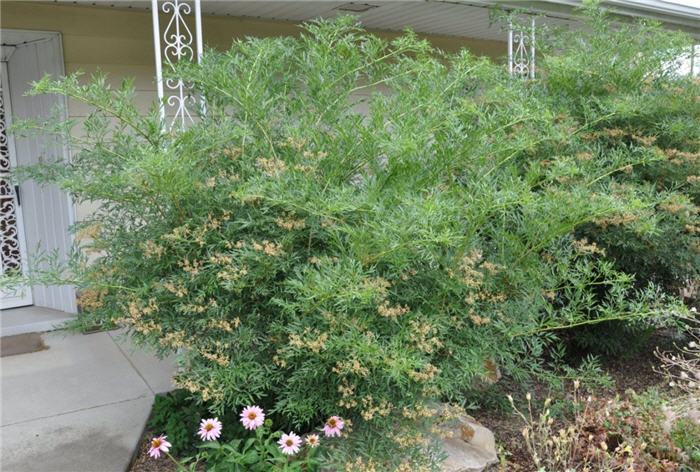| Botanical Name: Sambucus canadensis 'Laciniata' | |
| Common Name: Cutleaf American Elder |

-
Anatomy
-
Culture
-
Design
Plant Type
Shrub
Height Range
6-12'
Flower Color
White
Flower Season
Spring, Summer
Leaf Color
Light Green
Bark Color
Brown
Fruit Color
Blue
Fruit Season
Summer, Fall
Information by: Stephanie Duer
Photographer:
Photographer:
-
Description
-
Notes
‘Laciniata’ (synonymous with and also known as ‘Acutiloba’) grows to about 5 to 8 feet tall and wide (and wider). It has compound pinnate leaves that are deeply cut. Tiny lemon-scented white flowers appear in large flat-topped clusters in June. Flowers give way to clusters of black elderberry fruits in late summer. Fruits can be used to make jams, jellies, pie filings, and elderberry wine. Fruits are attractive to wildlife. American elder (Sambucus canadensis) and European elder (Sambucus nigra) are closely related plants. The Royal Horticultural Society currently lists American elder as Sambucus nigra var. canadensis.